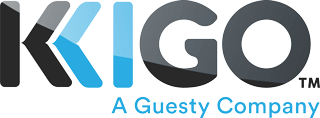How to Set an Average Daily Rate Using Revenue Management
Guest: "I'd like to stay in your vacation rental next week. What’s the daily rate?
Vacation Rental Manager: "That depends. How much are you willing to pay?"
Wouldn't it be great if the world worked that way? It would eliminate all the guesswork from your pricing strategy. Unfortunately, this type of question would not exactly endear you to potential customers. So, how can you find the answers without actually asking?
Two strategies we don’t recommend:
1. The Head in the Sand Approach
You could ignore the entire concept of supply and demand, simply set a price and forget it. This approach certainly saves time. Unfortunately it is disastrous to long term revenue. Ignoring opportunities afforded by dynamic pricing means that you are highly unlikely to be competitive in the marketplace.
Considering that today's travelers are comparison shopping and booking online in record numbers, the choice to maintain a set price for your vacation rentals without regard to market conditions is a foolhardy approach virtually doomed to fail.
Tripping.com states it plainly: "You can bring in more money by leveraging the different elements of yield management (time, price, min night stay, occupancy, etc.) than if you stick to a standard pricing policy of $X a night for a minimum of Y nights. If you charge someone $100 a night, but they would have paid you $140, then you lost $40."
2. Manual Revenue Management
Once you embrace the idea that your pricing strategy must change with the market, the next step is to figure out how to adjust for market trends. If you intend to handle revenue management manually, there is significant heavy lifting involved.
Manual revenue management consists of number crunching on a massive scale, which is likely why some choose the aforementioned “head in the sand” approach. Manual revenue management begins with determining your expenses and finding your break-even point. (This part may not be so difficult, assuming you have robust accounting software).
While your expense information is in-house and therefore should be easily accessible, market research is another matter entirely. Manual market research is time-consuming and labor-intensive. It involves scouring local listings from multiple sources, comparing amenities offered, location and other defining characteristics, and then comparing the price points with your own. You must also account for seasonal pricing variations. Plus, you would need to manually change prices across all partner sites where your properties are listed. Who has time for that?

The Solution: Revenue Management Made Easy
This is where Kigo Revenue Manager can make a real difference. Using the principles of revenue (or yield) management perfected by the hotel industry combined with powerful analytics, Kigo's revenue management solution is a tailored solution.
The system analyzes demand set by your occupancy rates and alters your prices within parameters that you set. This means that not only do rates increase, occupancy increases as Kigo Revenue Management automatically adapts to real-time changes in demand. This ensures that you always achieve the most competitive property pricing.
Better yet, Kigo revenue manager is automatic, thereby eliminating tedious hours once spent and manual rate changes. It integrates fully with your website and your channel partners. You simply set your pricing rules and then let the system do the work. It analyzes demand to produce an optimum price, fill low occupancy periods and align with the market during high season. Sounds easy, right? That is because it is.
Kigo Revenue Management software:
- Enables real-time analytics, eliminating hours of painstaking research
- Optimizes your pricing strategy automatically
- Integrates fully with your website
- Manages your revenue across multiple listing portals
- Drives higher occupancy rates and increases bookings
Maximize Profits with Kigo Revenue Management
Why would anyone choose revenue management the hard way when Kigo makes it so simple? If you are concerned the cost is too prohibitive, think again. The cost of the solution is more than offset by the increased revenue from balancing occupancy and billings for increased profit. A recent University of Michigan study reveals that utilizing dynamic pricing results in high occupancy rates and 16.9 percent higher daily revenue, on average. Would you like to increase your daily revenues by that percentage or more? Download our eBook: The Kigo Guide to Revenue Management to find out how.







